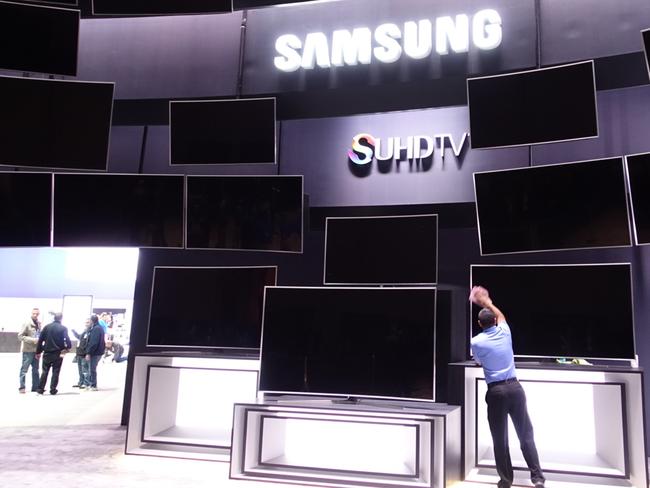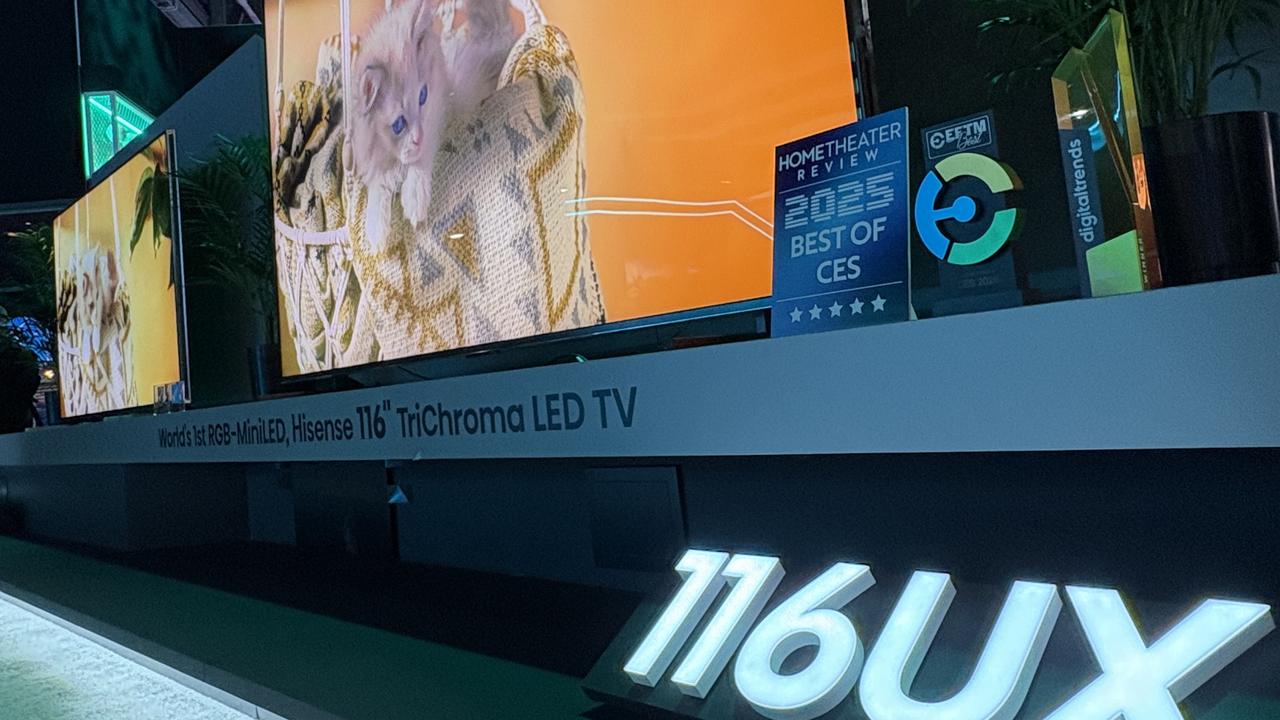Samsung, LG and Sony to go to war on the future of television technology in our homes
THE world’s biggest TV makers cannot agree on the best screen technology — and they’re ready to fight for your attention and dollars this year.
THE battle was held in Las Vegas, but the war will be waged in Australian lounge rooms.
The world’s biggest technology show was dominated by televisions due to arrive later this year.
But, unlike previous Consumer Electronics Shows where the major manufacturers have jockeyed for position with different versions of the same technology, this year they disagree on the fundamental make-up of future TVs.
Samsung is backing nanocrystal semiconductor technology, better known as quantum dot, to capture attention with brighter colours, greater contrast, and similar prices to current TVs.
Meanwhile, rival LG insists the pricier OLED, or organic light-emitting diode displays, is superior technology that offer brighter colours, deeper blacks, and is the future of television.
Sony is instead increasing its TV picture quality and brightness with an advanced image processor, and promoting 4K TVs.
SMARTER GADGETS: Unveiled at the CES show in Las Vegas
CES 2015: Cars steal the show for motoring enthusiasts

It is a disagreement that can only be solved by consumers, who will choose a winner in stores when the televisions launch. But what do the new technologies really offer?
Samsung promises its SUHD TVs, which will boast 4K resolution, will deliver two and a half times the brightness of conventional TVs, and 64 times the colour expression as a result of nanotechnology. In short, the technology enhances brightness, contrast, and a TV’s colour range.
Nanocrystals deliver different colours depending on their size, and can be added to existing LED-backlit LCD televisions, with panels costing about one third that of an OLED screen.
Samsung Australia consumer electronics vice-president Phil Newton said the company had been researching nanotechnology “for more than a decade” though mainly in the field of health.
Despite earlier delivering an OLED TV to the Australian market, Mr Newton said Samsung’s nanocrystal technology was “superior to OLED” and would be introduced to a wide range of TVs launched in April, from a 55-inch (140cm) model to an 88-inch (223cm) TV.

“Our belief is that SUHD is superior and it’s the pinnacle of television,” he said.
“You can make it in much larger sizes than OLED and early indications are that it manufactures very well.”
Mr Newton said in addition to bolder colours, the SUHD screens boasted greater longevity.
“The biggest hurdle with OLED is the lifetime of the screens,” Mr Newton said. “It could be a few months, it could be a year or two, it depends. It’s sheer luck.”
But Samsung’s South Korean rival LG disagrees on the technology. The company launched seven OLED televisions at CES this year with screens that are curved, flat, and flexible.
LG Electronics Australia marketing general manager Lambro Skropidis said the technology was “still our pride and joy” and “we really believe it’s the future of television”.
While the company also showed off a quantum dot television at CES, under the brand name Colour Prime, Mr Skropidis said the technology was not up to OLED’s standard.
“No matter what anyone tells you, there’s nothing that can match OLED,” he said.

“Quantum dot (technology) is in between conventional TV and OLED. Is it an improvement on what people already have? Yes. It is OLED? No.”
Asked about the longevity of OLED TV, however, Mr Skropidis said “people are probably going to want to upgrade their TV after a few years anyway”.
Meanwhile, Sony took a different path at CES. In addition to introducing an eye-catching slender TV just 4.9mm thin, the company focused on an improved image processor called the X1 that it promised would deliver clearer images, better 4K upscaling, and more detail in darker scenes.
Sony Australia managing director Vincent Yip said the company would also continue to promote the benefits of 4K screens, particularly in larger sizes.

“Our focus is definitely on 4K and we took a step forward from last year not just in the processor but the design,” he said.
“Four out of 10 Australian households already buy big screen sizes 50 inches (127cm) and above. When the TV is that big, 1080p full high-definition only does so much. You really need 4K.”
Ultimately, consumers will decide the victor in a technological race where an objective winner is not as clear as the screens themselves.
Jennifer Dudley-Nicholson travelled to CES as a guest of Samsung.



